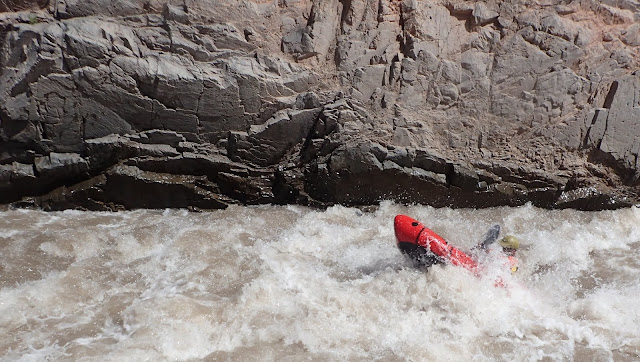But given that we are in the heart of the season and I took the time to write it, I thought I'd include it here in the blawg, so it's pasted in below, and at the bottom is the link to the winning essay. Note that Spark did actually feel compelled to throw a token amount at all of the avy centers that were represented by the writers....
Our dreams of a white Wasatch Christmas in 2008 were
answered by a 2-3 foot storm, and with associated 30-40mph winds the Utah
Avalanche Center had issued an avalanche warning due to the new load sitting on
top of buried facets. But there were
safe zones to ski, and after our typical early-season lean snowfall we were
keen for some powder skiing. However, as
always happens in avalanche accidents the line between safe and unsafe was an
easy one to cross.
After skiing a thickly-treed line off of the flank of Little
Water Peak between Big Cottonwood and Mill Creek canyons Paul, Matt, Dan, and I
headed for the aptly-named Shangri-La line; a fairly low angle ridge speckled
with nicely-spaced aspens that’s a natural go-to on high danger days. I was breaking trail and was trying a low,
flat traverse but let myself get forced uphill by a fence of trees. I arrived at the edge of an opening to cross
that was steeper than we wanted but was still less than 30 degrees, so I asked
my partners to wait while I sniveled across as quickly as I could. At the edge I stopped to watch Paul
follow. He carried on into the
lower-angle trees as I watched for Matt to cross, and it only took Matt two steps
onto the slope when it shattered and started to run. We all screamed, Matt did a quick kick turn
to get back into the woods, but it was too late; the snow from the steeper
slopes above came streaming through the trees, the snow slid to a stop, and
Matt was gone. We screamed his name, but got only eerie silence in reply.
After reading many comprehensive reports of avalanche
accidents over the years my partners and I had taken it upon ourselves a few
seasons prior to take the Utah Avalanche Center’s advice to not just do “beacon
drills” but do simulated rescues, where we buried a pack as deep as we could
and created as much “debris” as possible to force the “rescuer” to hone in on
the beacon, deploy and use our probes, and actually dig for the “victim”. This practice snapped to the fore when we
realized that Matt was buried, and I quickly organized a rescue effort, with
the confidence that we could execute.
Our closest beacon reading was 2 meters, so we knew he was deep, and
though the snow was soft because it hadn’t moved far/fast enough to set up we
were hampered in our digging efforts by the branches of the tree that he was
pinned against. When we did reach his
head he was blue and unresponsive, but after a couple of quick rescue breaths
his eyelids fluttered and we nearly burst with the realization that Matt was
going to live.
The Utah Avalanche Center has long been a leader in
promoting avalanche safety and was among the first to adopt social media short
videos to teach avalanche awareness and skills. Two years ago, they came to
Matt and me to ask if we’d be interested in the painful process of re-creating
our fateful day as the baseline for a longer, more provocative video, and we
were quite keen. Ultimately the UAC
produced a video that conveyed not only the frenzied panic associated with a
burial and rescue, but to also show the claustrophobic, stark reality that Matt
faced six feet down. After many painstaking
hours of filming and editing, “To Hell In A Heartbeat”
debuted in fall of 2017.
The Utah Avalanche Center is rightly proud of its stature in
the avalanche world, and with tens of thousands of followers it would have been
easy for them to assume that their reach would be sufficient. But the UAC reached out to celebrity
snowboarder Travis Rice, who enthusiastically agreed – in a win/win – to host
the video via his social media. As a
result of this alliance, the video has received over 2.8 million views worldwide.
The unprecedented ability for a local avalanche center to
produce a top quality video with a distribution strategy that both covered and
– more importantly - transcended the avalanche community is extraordinary. Although I would not wish my experience on
anyone, I am proud to be part of the legacy that the Utah Avalanche Center has
created, and more importantly, I’m convinced that the skills I learned from the
Utah Avalanche Center made it possible for my group to save my friend’s life
that day.
Here is the link to the winning essay (and the runner up!):
























































